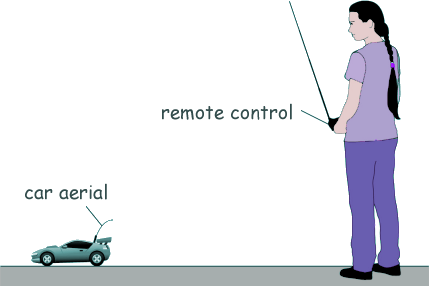GCSE Questions - Waves Q15. The diagram shows Kayjay playing with a remote-controlled car.
(a) The graph below shows the distance-time variation for the first 30 seconds of the car's motion.
[1 mark]
[4 marks] (b) A different car accelerated constantly from 0.12 m/s to 0.52 m/s. The acceleration of the car was 0.040 m/s2 . The work done to accelerate the car was 0.48 J. Calculate the resultant force needed to accelerate the car.
v2 - u2 = 2as 0.522 – 0.122 = 2 x 0.04 x s s = 0.522 − 0.122 /(2 × 0.04) s = 3.2 m Work done = force x distance moved along the line of action of the force W = Fs 0.48 = F x 3.2 F = 0.48/3.2 F = 0.15 N
v = u + at t = (v - u)/a t = (0.52 – 0.12)/0.04 t = 10 s average speed = (v + u)/2 = (0.52 + 0.12)/2 = 0.64/2 = 0.32 m/s distance travelled = average speed x time s = 0.32 x 10 = 3.2 m W = Fs 0.48 = F x 3.2 F = 0.48/3.2 F = 0.15 N
Δ Energy = ½mv2 - ½mu2 0.48 = (0.5 x m x 0.522) – (0.5 x m x 0.122) 0.48 = 0.1352m – 0.0072m 0.48 = 0.128m m = 3.75 kg F = ma F = 3.75 x 0.040 F = 0.15 N
[6 marks] (c) Explain why the car has a maximum speed. There is a maximum possible forward force provided by the motor. [4 marks] (Total 15 marks) |
Follow me...
|







